Images courtesy of Beyond Borders exhibit, Western Australia Museum, Sacred Heart Mission, Thursday Island, and www.westernaustrala.com
A virtual exhibition features the stories of Manilamen as retold by their descendants, retracing the early links between the Philippines and Australia. Titled Beyond Borders: Voices of Indigenous Australians of Filipino Descent, the exhibit is based on a book, Re-imagining Australia: Voices of Indigenous Australians of Filipino Descent (2016) by Dr. Deborah Ruiz-Wall with Dr. Christine Choo. It is curated by the National Museum of the Philippines and co-produced by the Philippine Embassy in Canberra.
The exhibit link: https://cultural.philembassy.org.au/phinau/beyond-borders
Early seafarers and migrants
The Manila Galleon (1565-1815), the trade route between Manila and Acapulco under Spanish colonial rule, lasted for 250 years. The last galleon sailed in 1811 and returned in 1815. Majority of the crew were indios (natives). Throughout its voyages, many indios deserted, time and again, and settled in Mexico City, Acapulco, California, Hawaii, or Louisiana (Saint Malo), the first Asian and the first Filipino settlement in the United States. Indios also worked for American vessels that went to Alaska for the fur trade in the 1780s.They were also involved in the American whaling industry by the 1840s, in the Arctic and in the Pacific.
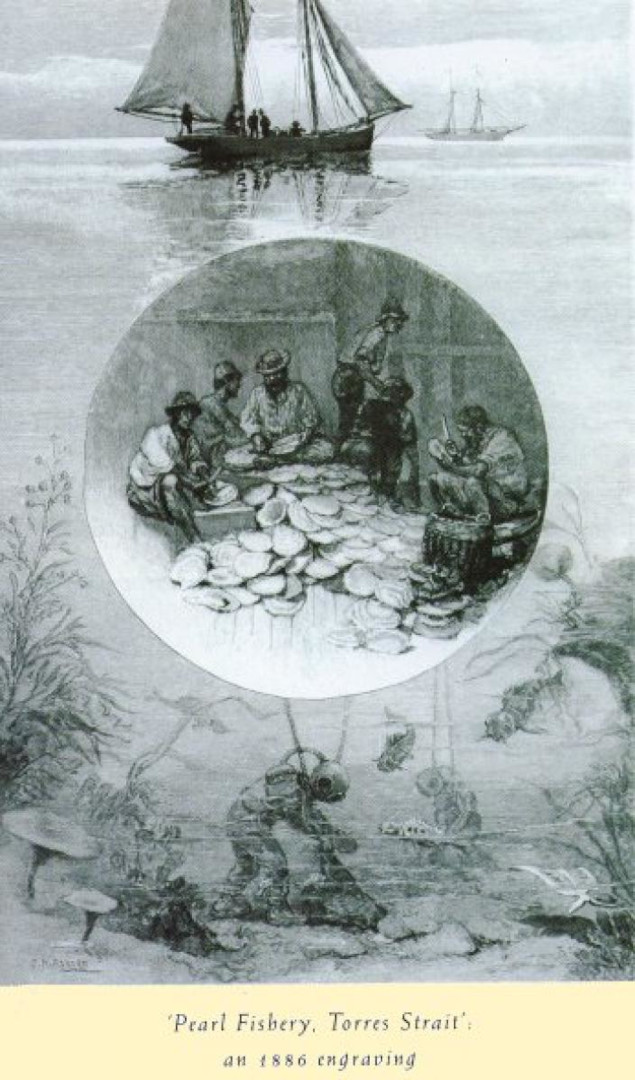

Known as the Manilamen, they were the early seafarers who travelled around the globe, proud to be identified with their homeland and its well-known colonial port, famous for its Manila cigar, Manila hemp, and Manila paper. The Philippines as a nation-state did not yet exist.
Broome
Towards the end of the 19th century, Thursday Island in the Torres Strait off northern Queensland, Australia, was the center of pearl-shell industry. In 1869, thousands were recruited to work as pearl divers in Cossack, now a ghost town, and later in Broome and in the Torres Strait.
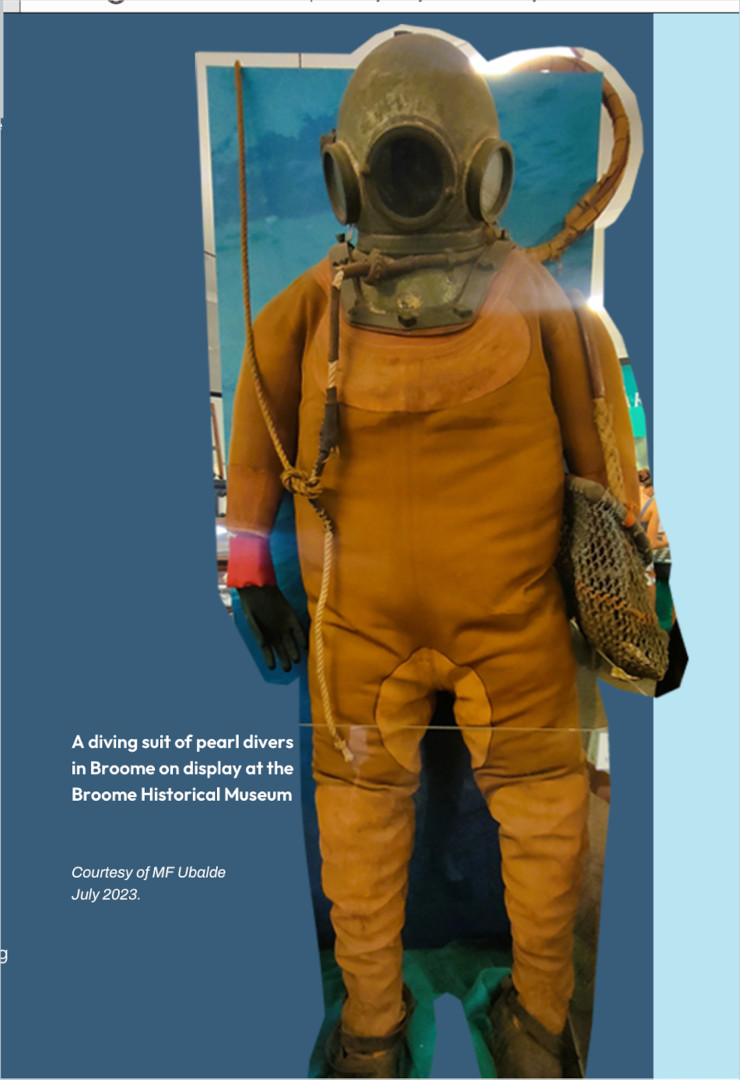

During the 1800s until the early 20th century, Broome became the pearling capital of the world, collecting the largest pearl oysters in the world, Pinctada maxima mother-of-pearl, used to make buttons and fine cutlery.
In Broome, Manilamen worked as captains, divers, crew, tenders or assistant to divers, shell openers, and sorters. Later, they also worked as fishermen, woodcutters, kitchen hand, market gardeners, and boatmen. A few, against all odds, became successful entrepreneurs.
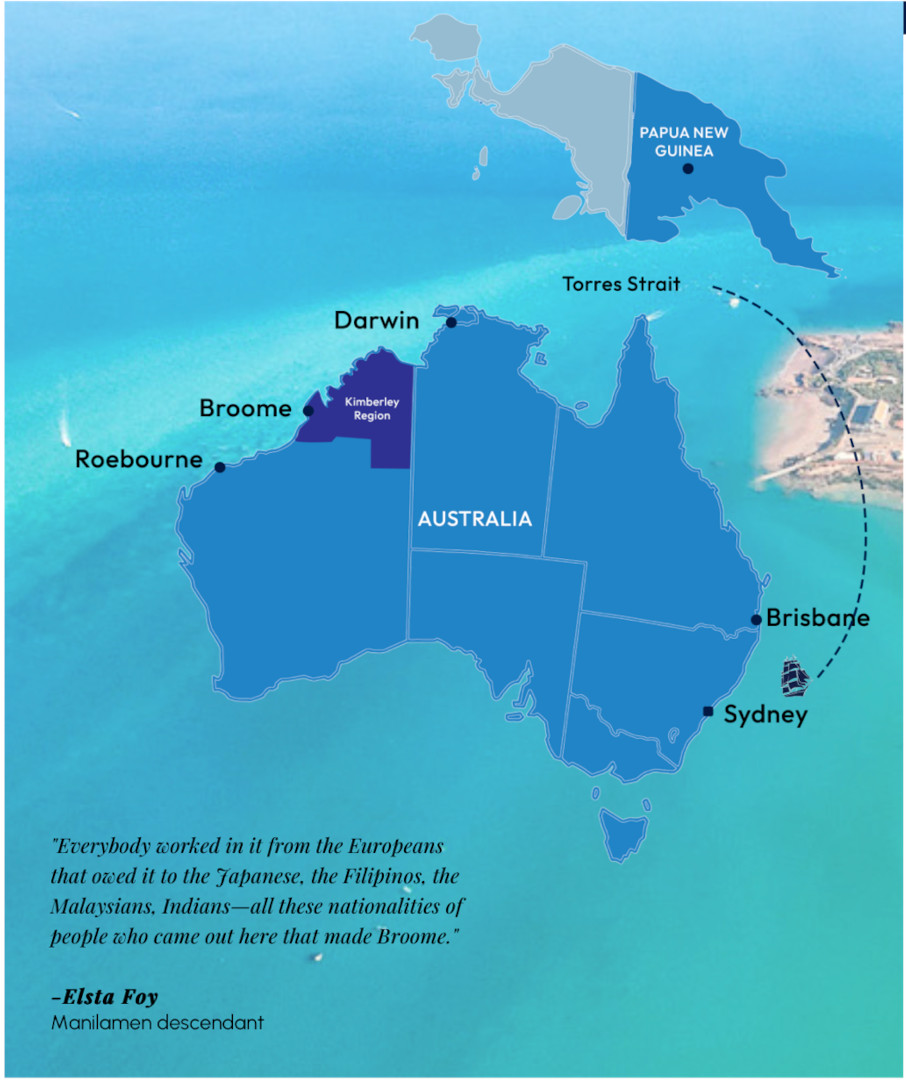

By 1884, a Catholic priest found 40 Manilamen living in Thursday Island; a total of 400 were scattered around the islands. By 1901, 279 Manilamen were working in the pearling industry with other Malays in Broome. Many Manilamen are buried in Broome Cemetery.
Today, several generations of Torres Strait Islanders have been able to trace their heritage over seven generations since the late 19th century.
Life in Australia
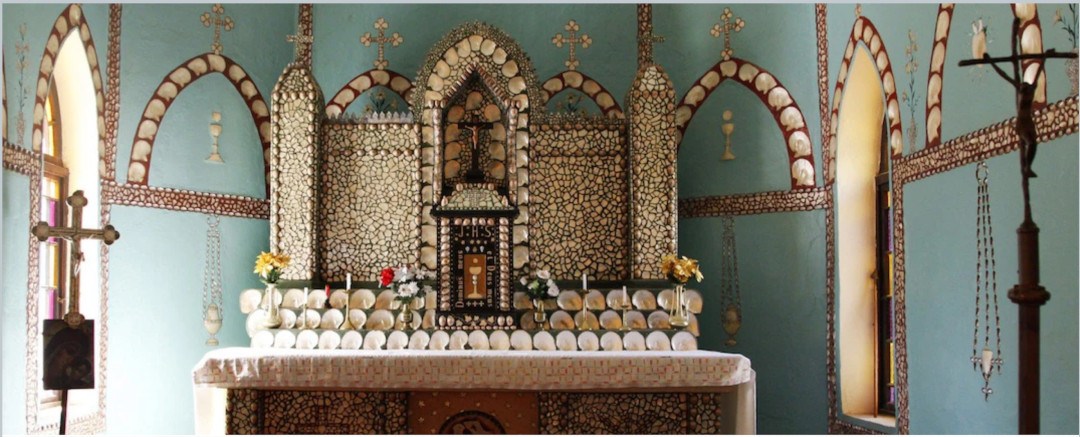

Eventually, Manilamen married with local women in Broome and Thursday Island. Mostly Catholics, they were active in church activities, and even helped in the construction of churches such as the “Stone on Stone” Church (St Joseph’s Church) in Hammond Island and in Beagle Bay. St. Joseph’s Church is a historic church made of blue granite stones with windows decorated with glass bottles. Francis and “Hislo” Sabatino were among the Manilamens who helped build this church, completed in 1954.
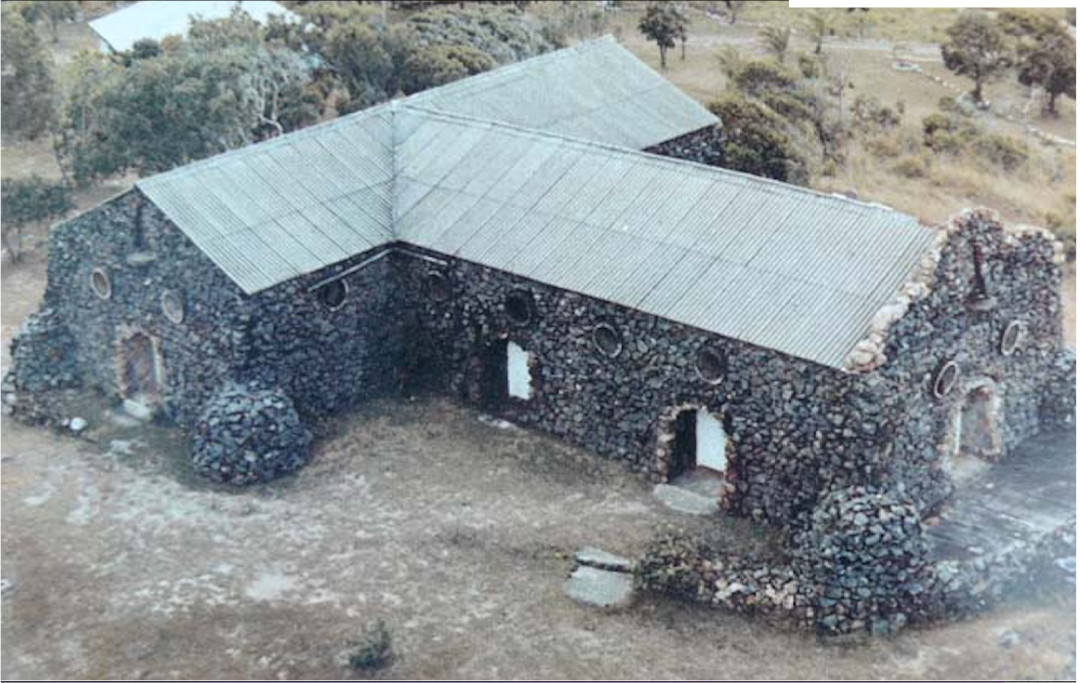

One of the most beautiful churches in Australia and constructed entirely by hand, the Mother of Pearl Church (Sacred Heart Church) in Beagle Bay opened in 1918 and features pearl shells throughout its interior. Its main altar is adorned with mother of pearl. Residents made the 60,000 lime bricks and gathered thousands of live shells from tidal reefs. Traditional motifs from Aboriginal groups are included in its design.
The Manilamen also introduced banjo, mandolin, and harmonica in their communities. In effect, they helped build the socio-economic foundations of Broome, Horn Island, Hammond Island, and Thursday Island.
Profiles
In the exhibit, the family tree is interactive, and by clicking each name, a short biography appears. Among the earliest Manilamen in Western Australia include:
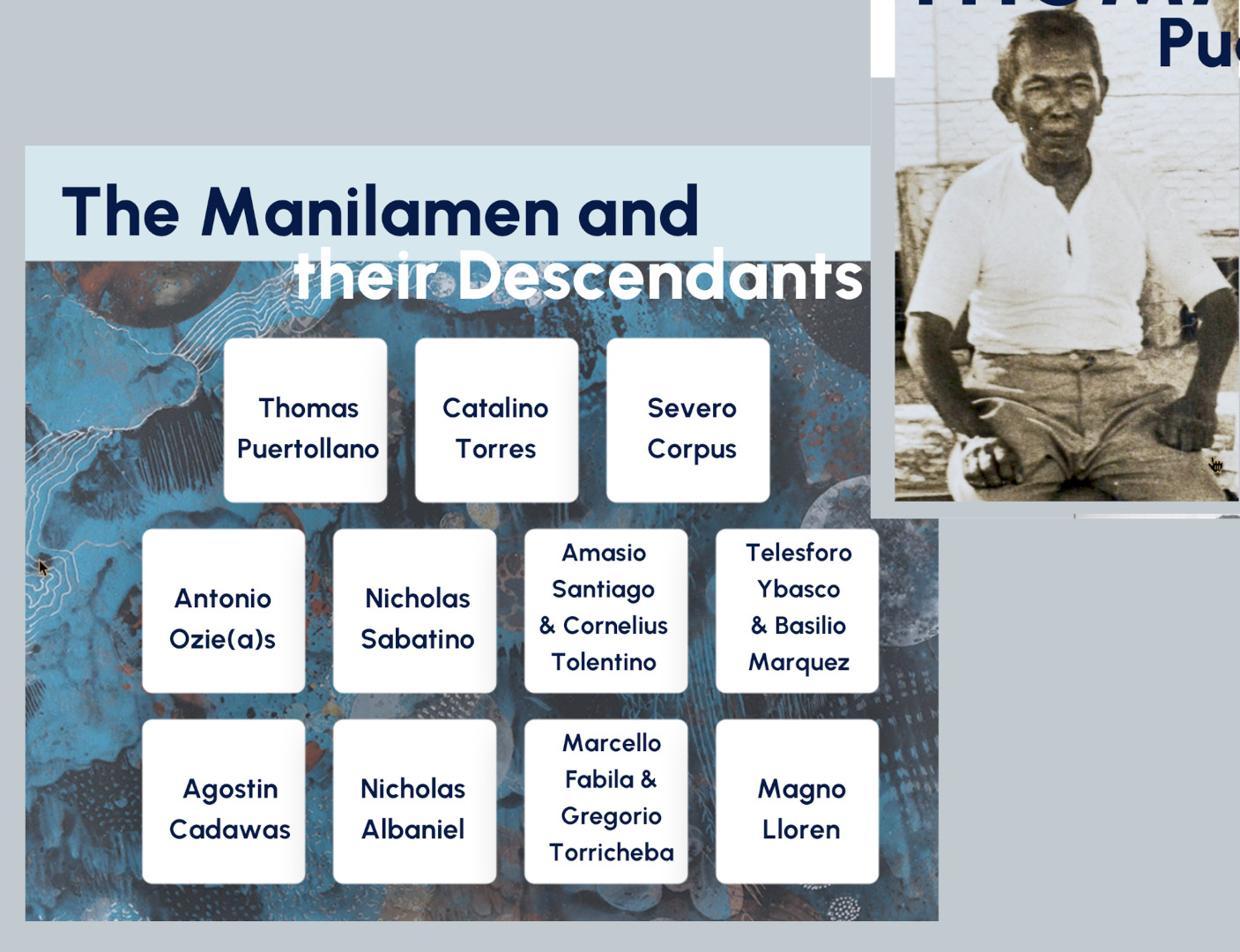

Thomas Puertollano (1869-1942, Sta. Cruz, Marinduque): He arrived from Singapore on 12 October 1889, and worked as a pearl diver. He married Agnes Guilwill Bryan, a daughter of an Aboriginal woman and a white man, and they had six children. Kevin Puertollano, his great-grandson, is one of the narrators of this project.
Catalino Torres (1875-na, Manila): Arrived on June 1884, and married Matilde Ida Tiolbadonga of Jabirr Jabirr, and Bard ancestry in 1898 in Beagle Bay. They had four children.
Severo Corpus: A pearl diver in Broome, his arrival date in Australia is unknown. He married a Yawuru woman, Maria Emma Ngobing in 1898 and they had six daughters. Later, he started his own business by providing the pearling luggers or boats with fresh water, wood, and other supplies.
Descendants: Aboriginal and Filipino
The Manilamen’s descendants trace their Filipino heritage through food (adobo, dinuguan, and tuba that some descendants recalled their grandfathers produced), music, and dancing and some Filipino words that have become part of Broome’s lexicon.


